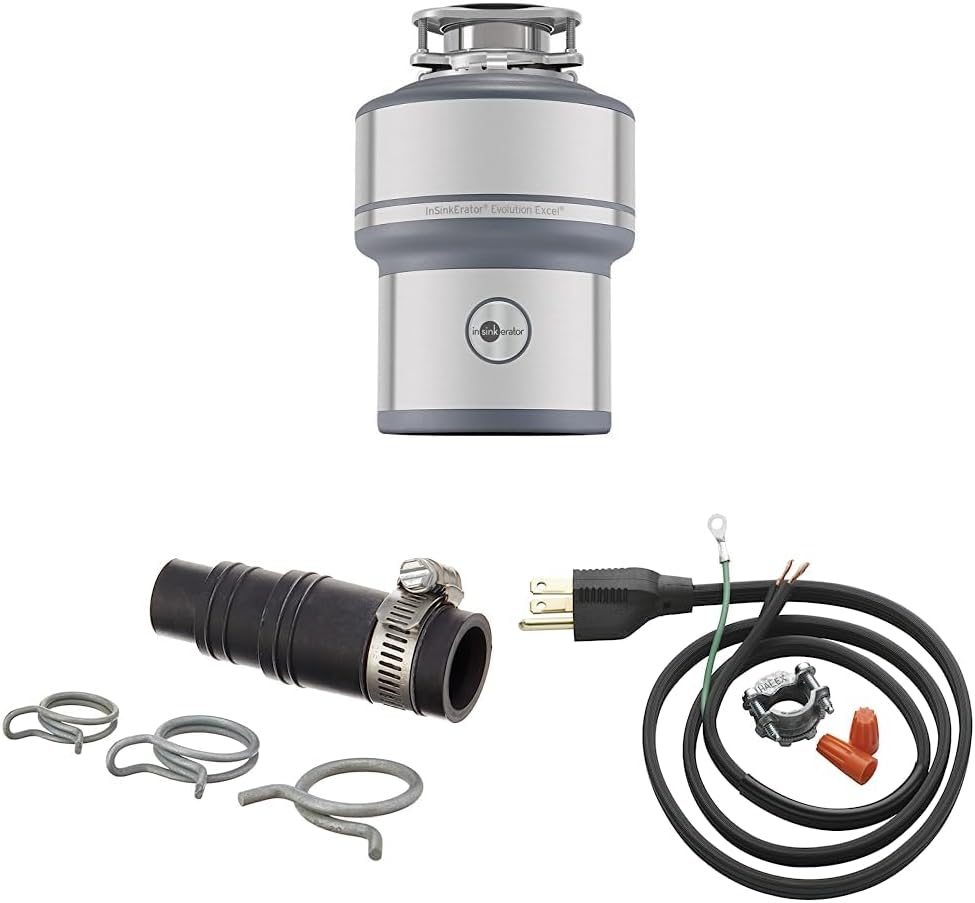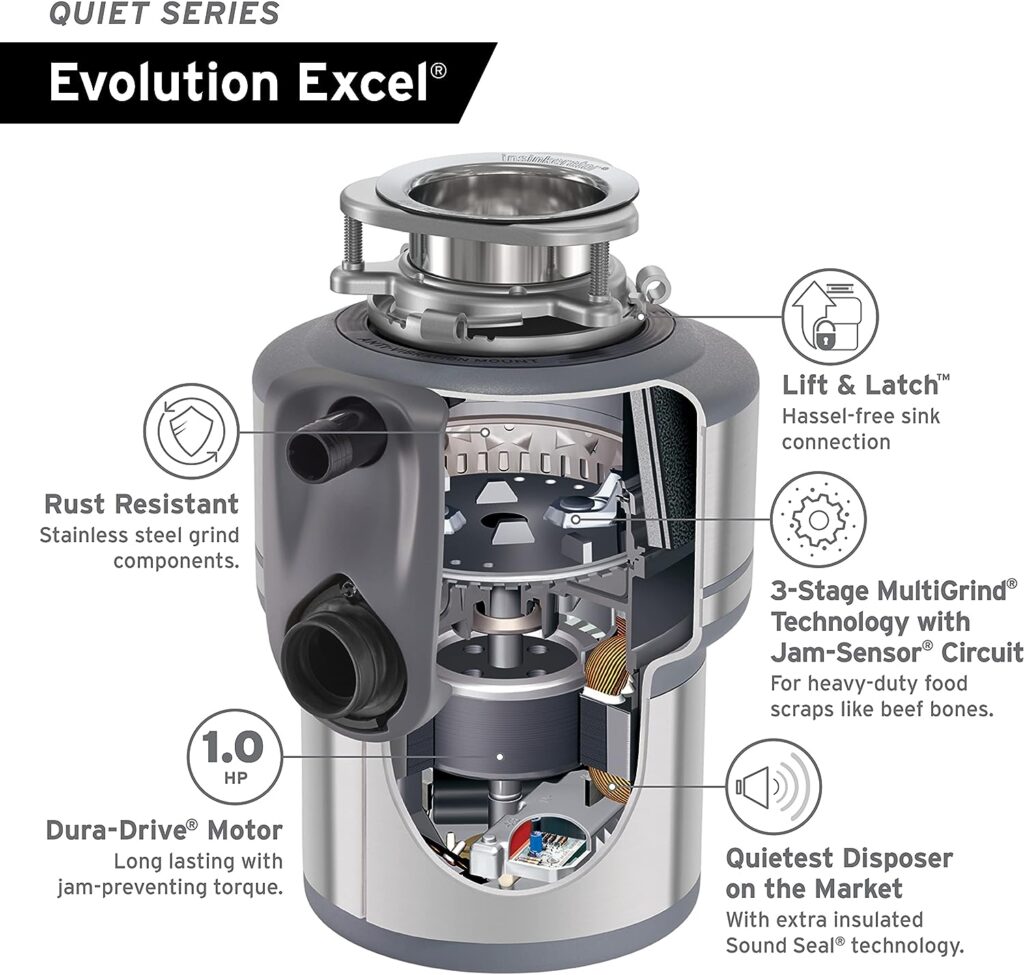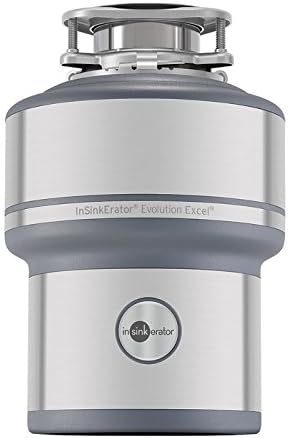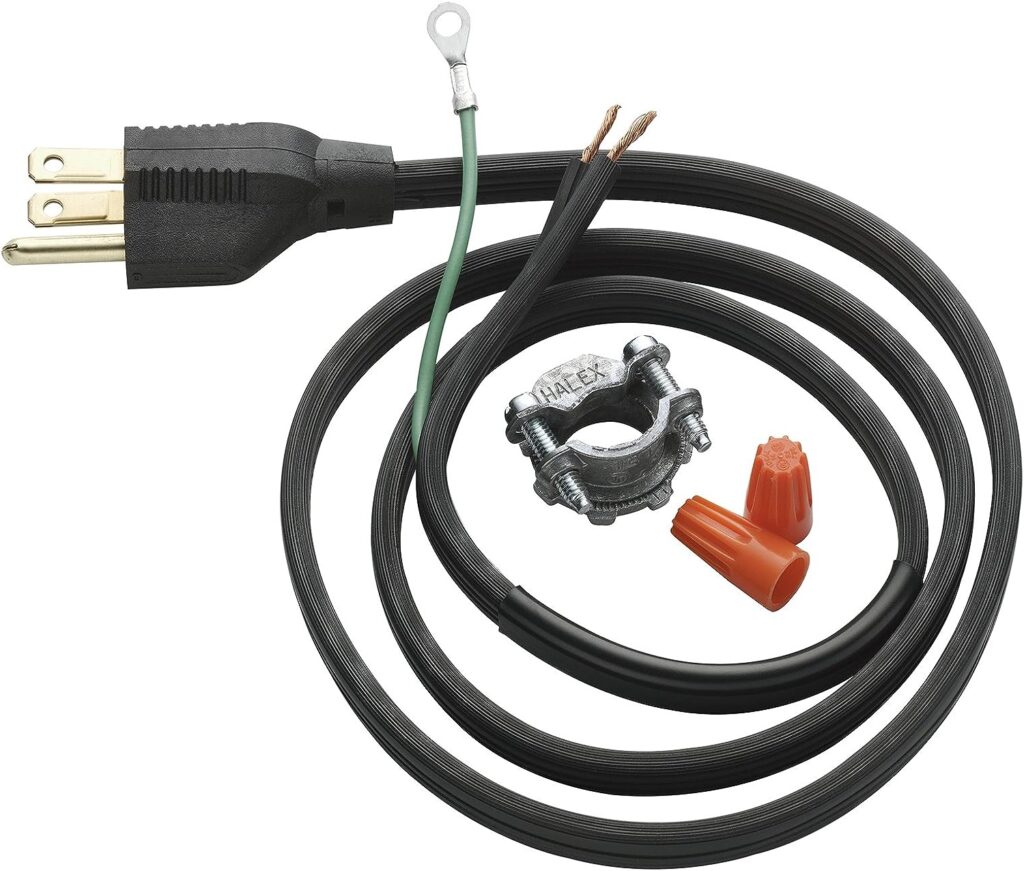Are you having trouble with your garbage disposal? We’ve all been there. It can be frustrating when you’re trying to dispose of food waste, and your garbage disposal simply refuses to do its job. But don’t worry, we’re here to help. In this article, we’ll explore some common reasons why your garbage disposal might not be working and provide you with some practical tips on how to troubleshoot and potentially fix the issue. So grab your toolbelt and let’s get started on getting your garbage disposal back up and running smoothly again.

This image is property of images.unsplash.com.
Inspecting Power Source
Check if the power is on
The first step in troubleshooting a garbage disposal that isn’t working is to check if the power is on. Make sure that the switch is in the “on” position. If your garbage disposal has a power indicator light, check if it is illuminated. If the power is off, simply flip the switch back on.
Make sure the circuit breaker is not tripped
If the power is on and the garbage disposal still isn’t working, the next thing to check is the circuit breaker. Locate the circuit breaker panel in your home and find the breaker that controls the garbage disposal. Check if this breaker has tripped. If it has, reset it by flipping it all the way to the “off” position and then back to the “on” position.
Test the power cord
If the power is on and the circuit breaker is not tripped, the next step is to test the power cord. Inspect the power cord for any visible damage, such as cuts or frayed wires. If you notice any damage, it may be necessary to replace the cord.
To test the power cord, unplug it from the electrical outlet and plug in another small appliance to ensure that the outlet is functioning properly. If the outlet is working, plug the garbage disposal’s power cord back in and test if it is now working. If it still isn’t, there may be a mechanical issue that needs to be addressed.
Checking for Mechanical Issues
Look for any visible jammed objects
If the power is on and the garbage disposal still isn’t working, it’s time to check for mechanical issues. Start by looking for any visible jammed objects in the disposal. Using a flashlight, carefully inspect the inside of the disposal chamber for any foreign objects, such as bones, silverware, or other debris that may be causing it to jam.
If you do find a jammed object, make sure to turn off the power to the disposal before attempting to remove it. Using a pair of long-handled tongs or pliers, carefully extract the object from the disposal. Be cautious not to damage the impellers or any other parts of the disposal while doing so.
Try manually rotating the impellers
If there are no visible jammed objects, the next step is to try manually rotating the impellers. This can help dislodge any debris that may be causing the disposal to jam. Most garbage disposals have a hex-shaped hole at the bottom that can be accessed with an Allen wrench or hex key.
Insert the wrench or key into the hole and turn it back and forth several times to manually rotate the impellers. This motion can help free up any debris and restore the normal operation of the disposal. Once you’ve done this, test if the disposal is now working.
Inspect the flywheel for damage
If the garbage disposal still isn’t working, inspect the flywheel for any damage. The flywheel is a circular metal plate inside the disposal that rotates to grind up the waste. Look for any visible cracks, chips, or signs of wear on the flywheel.
If you notice any damage, it may be necessary to replace the flywheel. This is a more complex repair that may require the assistance of a professional. Contact a plumber or the manufacturer of the disposal for guidance on how to proceed.
Resetting the Device
Locate the reset button
If the power is on and there are no mechanical issues, the problem may be resolved by resetting the garbage disposal. Most disposals have a reset button located on the bottom or side of the unit. Look for a small red button and make sure to turn off the power to the disposal before proceeding.
Press the reset button
Once you’ve located the reset button, press it firmly. You may feel a slight resistance as you press it, but this is normal. The reset button is designed to trip in the event of an overload or malfunction, and pressing it resets the disposal.
Test if the disposal is working
After pressing the reset button, restore the power to the disposal by flipping the switch or resetting the circuit breaker. Test if the disposal is now working by turning it on and running water into the sink. If it is functioning properly, the problem has been resolved. If not, further troubleshooting may be required.
Clearing Clogged Drains
Turn off the power to the disposal
Before attempting to clear a clogged drain, always turn off the power to the disposal to avoid any accidents or injuries. Locate the circuit breaker that controls the disposal and flip it to the “off” position. If your disposal has a power cord, unplug it from the electrical outlet.
Use a plunger to clear the clog
One of the most straightforward methods for clearing a clog in a garbage disposal is to use a plunger. Fill the sink with enough water to cover the rubber portion of the plunger. Place the plunger over the drain opening and create a tight seal.
Push and pull the plunger vigorously, using firm pressure to create suction and dislodge the clog. Repeat this motion several times, and then test if the water drains freely. If the clog persists, you can try using a drain snake.
Use a drain snake to remove blockage
If the plunger is not effective in clearing the clog, a drain snake can be used to remove the blockage. Insert the snake into the drain opening and push it through the pipes, rotating it as you go. Once you feel resistance, rotate the snake to break up the clog or pull it out if possible.
Be cautious when using a drain snake, as it can cause damage to the pipes if used incorrectly. If you’re unsure of how to properly use a drain snake, it’s best to consult a professional plumber.

This image is property of images.unsplash.com.
Removing Excessive Waste
Avoid putting large amounts of waste at once
To prevent your garbage disposal from becoming overwhelmed, it’s important to avoid putting large amounts of waste into it at once. Instead, feed the disposal small amounts of food waste gradually. This allows the disposal to effectively grind up the waste without straining the motor.
Cut larger items into smaller pieces
If you have larger food items, such as fruit peels or vegetable scraps, it’s best to cut them into smaller pieces before putting them into the disposal. Large pieces of food can become lodged in the disposal and cause it to jam or clog.
By cutting larger items into smaller pieces, you allow the disposal to more easily grind them up and prevent any potential issues.
Follow the manufacturer’s guidelines for capacity
Each garbage disposal has its own capacity for how much waste it can effectively handle. It’s important to follow the manufacturer’s guidelines for capacity to avoid overloading the disposal and causing it to malfunction.
Refer to the user manual or manufacturer’s website for information on the specific capacity of your disposal. By adhering to these guidelines, you can ensure the optimal performance and longevity of your garbage disposal.
Dealing with Strange Noises
Identify the source of the noise
If your garbage disposal is making strange noises, such as grinding or humming sounds, it’s important to identify the source of the noise. This can help determine if the problem is related to a mechanical issue or something else.
Carefully listen to the noise and try to pinpoint where it is coming from. It’s possible that the noise is originating from the impellers, flywheel, motor, or other components of the disposal.
Check for loose or damaged components
Once you’ve identified the source of the noise, inspect the associated components for any loose or damaged parts. Tighten any loose bolts, screws, or fittings that may be causing the noise. Look for signs of wear or damage, such as cracked impellers or a damaged flywheel.
If you notice any significant damage or suspect a more serious issue, it’s best to call a professional plumber for further assessment and repairs.
Call a professional if noise persists
If you’ve checked for loose or damaged components and the noise persists, it may be indicative of a more complex issue that requires professional attention. Continuing to operate a garbage disposal that is making unusual noises can potentially cause further damage and lead to costly repairs.
Contact a qualified plumber or the manufacturer of the disposal to schedule an inspection and any necessary repairs. They will be able to diagnose the problem and recommend the appropriate course of action.

This image is property of images.unsplash.com.
Preventing Foul Odors
Clean the disposal regularly
To prevent foul odors from emanating from your garbage disposal, it’s essential to clean it regularly. After each use, run cold water and a small amount of dish soap down the drain while the disposal is running. This helps to clean the interior surfaces and eliminate any residual food particles.
Additionally, you can use a solution of equal parts vinegar and water to further clean and deodorize the disposal. Pour the mixture into an ice cube tray and freeze it. Once frozen, drop a few of the vinegar ice cubes into the disposal and run it with cold water. The ice cubes help to dislodge any debris while the vinegar neutralizes odors.
Use ice cubes and citrus rinds for freshening
Another method for freshening your garbage disposal is to use ice cubes and citrus rinds. Place a handful of ice cubes into the disposal and run it with cold water. The ice cubes help to dislodge any buildup on the impellers and inside the disposal.
You can also add citrus rinds, such as lemon or orange peels, to the disposal. The natural oils in the rinds help to freshen the disposal and leave a pleasant scent. Run the disposal with cold water to grind up the rinds and enjoy a fresh-smelling kitchen.
Avoid disposing of strong-smelling foods
To prevent foul odors from developing in your garbage disposal, it’s important to avoid disposing of strong-smelling foods. Items such as onion skins, garlic, fish scraps, and certain spices can leave lingering odors in the disposal.
Instead, dispose of these items in the trash or compost bin to keep your garbage disposal smelling fresh. If you accidentally put a strong-smelling food into the disposal, use one of the cleaning methods mentioned earlier to eliminate any odors.
Addressing Leaks
Turn off the power to the disposal
If you notice a leak in your garbage disposal, it’s crucial to turn off the power to the unit before attempting any repairs. Locate the circuit breaker or unplug the power cord to ensure that the disposal is completely disconnected from the electrical supply.
Check for loose connections
One of the most common causes of leaks in a garbage disposal is loose connections. Inspect the connections between the disposal and the sink drain pipe, as well as the dishwasher hose if applicable. Tighten any loose connections using a pipe wrench or pliers, being careful not to overtighten and cause damage.
Replace worn-out gaskets or seals
If the leak persists after checking for loose connections, it may be necessary to replace worn-out gaskets or seals. Over time, these components can deteriorate and cause leaks in the disposal.
To replace gaskets or seals, consult the user manual or manufacturer’s instructions for your specific model. If you’re unsure of how to proceed, it’s best to contact a professional plumber to ensure that the job is done correctly and to avoid any further damage to the disposal.
Avoiding Overheating
Allow the disposal to cool down
If your garbage disposal has overheated and shut off, it’s important to allow it to cool down before attempting to use it again. Overheating can be caused by excessive use, overloading the disposal, or using hot water while running the disposal.
Wait for at least 15 to 20 minutes to allow the motor to cool down before attempting to use the disposal. This can help prevent any further damage or malfunctions.
Check for obstructions that may strain the motor
After the disposal has cooled down, check for any obstructions that may have caused it to overheat. Inspect the interior of the disposal chamber for any debris, such as large food pieces, bones, or silverware that may have become lodged.
Remove any obstructions using long-handled tongs or pliers, taking care not to damage the impellers or other components. Once the obstructions are clear, restore the power to the disposal and test if it is now functioning properly.
Consider upgrading to a more powerful unit
If your garbage disposal frequently overheats or struggles to handle your household’s waste, it may be time to consider upgrading to a more powerful unit. A more robust disposal can better handle larger amounts of waste and reduce the likelihood of overheating or other malfunctions.
Consult a professional plumber or research different disposal models to find one that is suitable for your needs. It’s important to select a disposal that has the appropriate capacity and power to effectively handle your household’s waste.
Knowing When to Seek Professional Help
Persistent problems despite troubleshooting
If you’ve tried troubleshooting your garbage disposal and the problems persist, it may be necessary to seek professional help. A qualified plumber will have the expertise and tools needed to diagnose and repair more complex issues that may be affecting your disposal.
Continuing to operate a malfunctioning disposal can lead to further damage or accidents, so it’s best to contact a professional as soon as possible.
Electrical or wiring issues
If you suspect that there are electrical or wiring issues with your garbage disposal, it’s essential to leave these repairs to a professional. Working with electricity can be dangerous and should only be done by someone with the appropriate knowledge and experience.
Contact a licensed electrician or a plumber who specializes in garbage disposal repairs to address any electrical or wiring issues that may be affecting the operation of your disposal.
Strange odors or smoke coming from the disposal
If you notice strange odors or smoke coming from your garbage disposal, it’s important to stop using it immediately and seek professional help. These can be signs of more serious issues, such as motor or electrical problems, that require professional attention.
Contact a qualified plumber or the manufacturer of the disposal for guidance on how to proceed. They will be able to assess the situation, diagnose the problem, and recommend the necessary repairs to ensure the safe and proper functioning of your garbage disposal.








